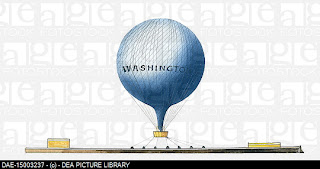On reading the background fluff for Dystopian Wars, one of the things I like about the Britannian faction is that ALL of their machines are designed and built by Brunel Academy of Engineering. A nice homage to one of Britain's greatest engineers. Had such technology existed in 1870, I'm sure Brunel would have built hulking landships because he really did build bigger. Bigger locomotives, broader track guages, bigger steamships. Ever heard of the Great Eastern? A massive side-wheeler passenger ship that was later used to lay the Transatlantic Cable, thus linking the British Empire in a vast telegraphic network, that played a key role in more than one war. The Great Western Railway (funny how he liked the word "Great" attached to everything.) was also his brainchild. Especially in the early years of steam, when he wanted "Broad Guage" track laid everywhere in Britain. He lost that battle unfortunately (7ft. wide rails would have made for a smoother ride, as well as fewer derailments when flying around hairpin turns at 90mph.). Broad guage locomotives have a lower center of gravity and bigger wheels, making for a smoother, more comfortable ride. Which is what Brunel needed for his other hobby of drawing perfect circles freehand.
Isambard Kingdom Brunel was born on April 9th, 1806, during the height of the Napoleonic Wars and the beginning of the Industrial Revolution. His father, ironically, was French. In fact, his father was a French engineer. He was born at Portsmouth nevertheless. Apparently, the Force was with him, because he had mad skills in mathematics. Mad skills I don't have, but I'm pretty sure the kind of skills that made Brunel the Victorian Tony Stark. When he got old enough, he went to the
Ecole Polytechnique, or School of Polytechnics in France. When he got back, he was so awesome he promptly designed and built single-handed the Thames Tunnel, which tunneled under the Thames. And it wasn't just any tunnel, it was a tunnel big enough to drive a train through. Literally.
Promptly after this Victorian Herculean effort, our super hero went on a spate of bridge building all over Britain. Nine of his bridges remain standing today. The reason more don't is because the British government knocked all the rest down in a mid 1970's spate of Anti-Brunel hatemongering, and Anti-Historical hatemongering in general. (Parliament pretty much destroyed the Royal Navy in the 70's as part of this hatemongering of their own former empire. More on that later. All this "we can't afford a navy". Total bunk!)
After he got tired of bridging every gap England had to offer, Brunel went on to build the Great Western Railway, and several giant steamships. Both of which were wildly successful (if expensive at the outset) endeavors making Brunel almost as rich as Tony Stark. And just as awesome. The GWR was so big it even had it's own steamship (The Great Western), which carried passengers from trains in Bristol, to trains in New York. (Apparently this was one gap Brunel couldn't build a bridge over. Probably due to Parliament's cramping on his awesomeness or something.)
Brunel even designed and built an "atmospheric railway" which was pretty badass at the time because no one else thought of it yet. It's pretty much the steampunk version of the bullet train, except that it's a miles long friggin vacuum tube that sucks trains along it. Unfortunately, it was too awesome for the technology at the time, (leather joints in the sealed vacuum tube needed to be replaced frequently due to rot from water seepage, and plastic/rubber joints hadn't been invented yet.) and the project flopped.
Brunel (who shall hereafter be known as Victorian Tony Stark) died in 1859, from a stroke which he got from extreme workaholic stress, sadly, right after the completion of his greatest work, the Great Eastern.
Famous Quote: "There are two ways of doing things, the Great Western Way, and the Wrong Way.
- I. K. Brunel
So, frankly said, I love how they worked Brunel's name into the Dystopian universe. Just as Queen Victoria makes the best British faction leader in the game, (Unlike the Prussians who have to have a made up Emperor Grunder, who's name sounds like something I just barfed up. Why didn't they stick with Kaiser Wilhelm?! And where's Bismarck?) so Brunel-made products make the Dystopian world a safer, deader, place for Her Majesty's subjects. ;) I think he also designed some bridges that were so awesomely massive, they're still in use today.
Artist's rendering of Brunel's futuristic Atmospheric Railway.
Schematics for Brunel's vacuum train. Totally fuel efficient as it would have been a train without an engine. Well, it did have an engine actually, one at each end of the line sucking it back and forth.
The Great Eastern in a "rough" sea.
The Great Eastern in a "calm" sea. (Looks more like the Titanic with side wheels.)
Brunel from one of my favorite webcomics, "Lovelace and Babbage".
(Note to readers: Charles Babbage designed the world's first programable computer, in the 1820's. Ada, Countess of Lovelace, is considered the world's first computer programmer. She died in 1852. If such a machine had been built, it would have been done by Brunel. Cuz he's awesome like that.)
Brunel and his beloved Great Western Railway.
Brunel standing in front of the launching chain for the Great Eastern. (By the way, this is just ONE of the launch chains.)

























